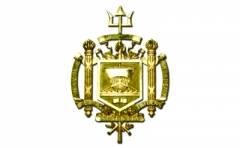Read more about our ranking methodology.
Annapolis, MD 21402-1300
* These statistics utilize the most recently released data from IPEDS (Integrated Postsecondary Education Data System)
Sources for school statistics and data include U.S. Department of Education's National Center for Education Statistics and the Integrated Postsecondary Education Data System. Data may vary depending on school and academic year.


Source data obtained from U.S. Department of Education's Office of Post-secondary Education (OPE)

What letter grade would you give your school on how well it prepares students for a career in the real world?
Based on 2 ReviewsWhat letter grade would you give the students/culture at your school?
Based on 1 ReviewsWhat letter grade would you give the facilities at your school.
Based on 2 ReviewsWhat overall letter grade would you give the activities/groups at your school?
Based on 1 ReviewsCharles Bolden, Alan Shepard, and Wendy Lawrence all reached for the stars at the Naval Academy before becoming astronauts. Other famous people who attended include Congressman John McCain, basketball player David Robinson, and football player Roger Staubach. President Jimmy Carter was a member of the Class of 1947. When businessman H. Ross Perot ran for president in 1992, he chose fellow Naval Academy grad James B. Stockdale as his running mate.
The 338-acre campus, affectionately known as “The Yard,” is located in Annapolis, Md., where the Severn River meets the Chesapeake Bay. As a National Historic Site, it attracts more than a million visitors annually. The crypt of Revolutionary War hero John Paul Jones rests beneath the Academy Chapel. Monuments throughout the tree-shaded campus honor the bravery of military men and women, and buildings and walkways feature the names of famous graduates. All students reside in campus housing.
Classes utilize technology for learning and communication purposes, but USNA does not offer online or distance-education programs. And while the institution itself does not award graduate degrees, select students secure scholarships to further their studies elsewhere. (The Naval Postgraduate School in Monterey, California, is a popular choice.) Some continue immediately after graduation, while others return to school following their service obligation. Highly qualified students even may be able to start during their senior year at USNA.
Any competitions against the United States Military Academy at West Point always generate campus-wide interest. Rivalry reaches its height in the annual football game as they battle to take home the Commander-in-Chief’s Trophy. The institution prioritizes physical fitness for all students, so besides fielding a large variety of varsity teams in NCAA Division I, the school offers many club sports. Fencing, ice hockey, or powerlifting anyone?
STEM fields dominate at the Naval Academy in order to meet the high-tech needs of the Navy. The institution has particular strength in electrical and mechanical engineering. Regardless of major (even English, political science, and history), all students receive a Bachelor of Science degree because of the technical content of the core curriculum. Leadership training alongside academic courses prepares students (known as midshipmen) for active duty after graduation. The U.S. Navy fully funds tuition in exchange for this post-graduation service.
